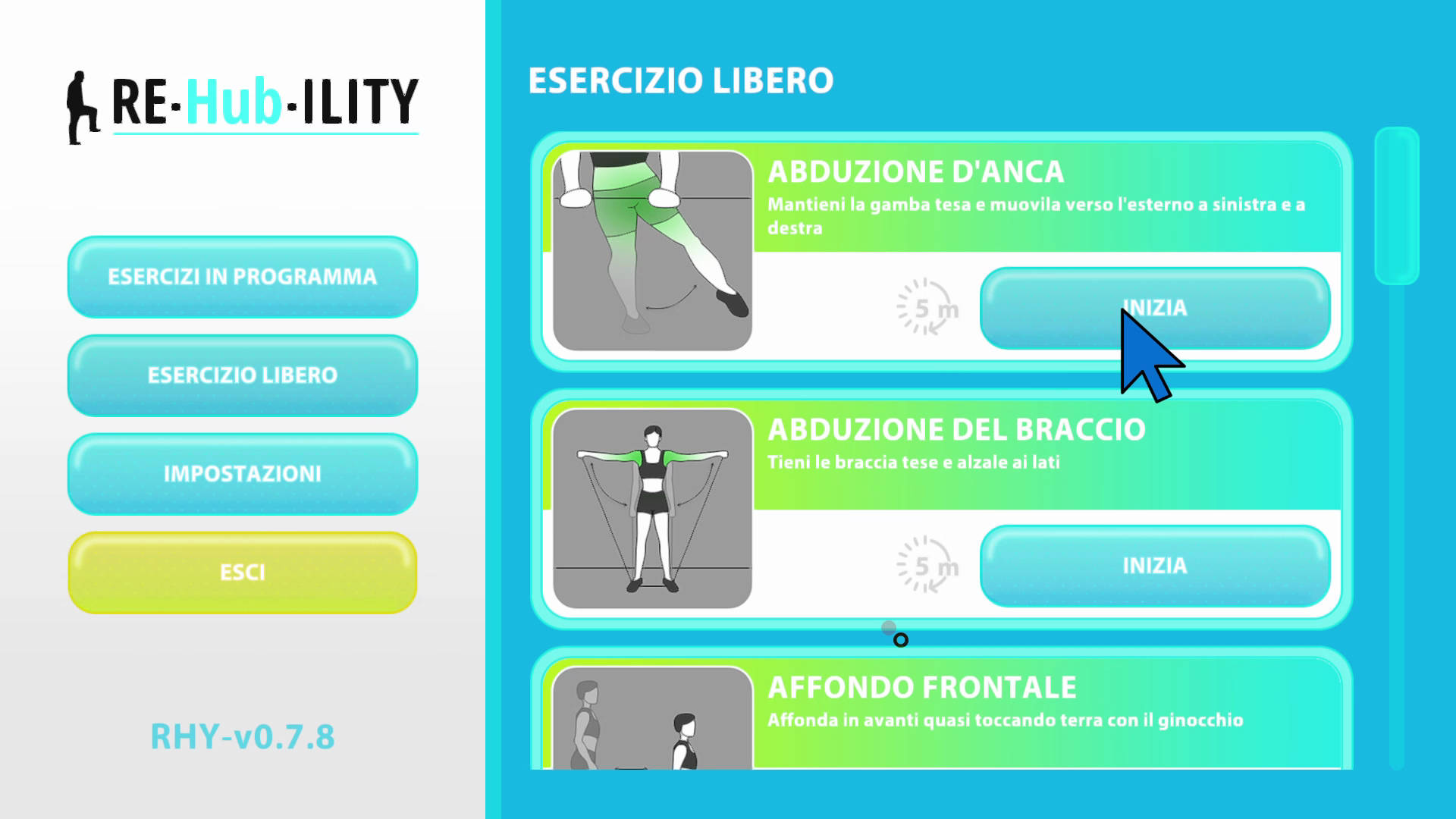Re-Hub-ILITY

Project Details
Year: 2022
Role: Lead programmer
Studio: Digital Tales
Development Time: 3 years
Team Size: 4
Engine: Unity
Platforms
Re-Hub-ILITY is a research project I contributed to, building on my previous work in the field of serious games for health.
The goal of the project is to create a sustainable, safe, and effective platform for autonomous at-home postural rehabilitation for the elderly.
Key Features
- A user-friendly platform that enables safe and effective rehabilitation sessions at home
- Real-time monitoring of the user's movements to ensure safety during exercises
- A virtual coaching system that guides and advises users through their daily routines
- Seamless integration with a dedicated monitoring platform for clinicians and caregivers to track user progress remotely
Technology Stack & Architecture
The core of the Re-Hub-ILITY system is a Unity-based client structured as a set of themed mini-games designed for rehabilitation.
The client interfaces with a Node.js backend that exposes:
- OAuth-based authentication APIs
- Client-side APIs for uploading gameplay results and download the daily exercise schedule.
- Server-to-server APIs for communication with external partners responsible for clinical data aggregation
Hardware Abstraction for Motion Tracking
A major technical focus was building an input abstraction layer on top of Unity’s Input System.
This allowed seamless integration with various motion tracking devices, including:
- Commercial sensors like Microsoft Azure Kinect
- Custom-made wearable devices developed by partner institutions
- Including MEMS-based sensors for joint rotation tracking
- And active feedback devices capable of applying physical resistance during strength exercises
This abstraction ensured maximum hardware flexibility, allowing clinical partners to tailor the rehabilitation experience to the needs of each study or patient group without changes to the game logic.
Real-Time Monitoring & Virtual Coaching
To enhance both the effectiveness and engagement of the rehabilitation experience, we developed a real-time exercise monitoring system built around the figure of a virtual therapist.
This system served two core functions:
Posture Feedback During Exercise
It provided instant visual and audio feedback on the quality of the user's posture and movements.
This helped ensure safe execution of the exercises and enabled users to self-correct in real time, reducing the risk of injury or incorrect performance.Motivation and Personalized Guidance
Through the virtual therapist character, the system offered:- Positive reinforcement and motivational messages during and after sessions
- General health and movement advice tailored to the user’s performance
- Support on long-term training goals to improve consistency and adherence
This approach helped increase user retention, especially in elderly users, by making the experience more personal, supportive, and easy to follow.
Lessons Learned
Making Technology Accessible Through Thoughtful UX
One of the most valuable lessons from the Re-Hub-ILITY project was the importance of iterative user experience design, especially when targeting populations that may not be familiar with digital technology—such as the elderly.
We learned that:
- Accessibility must be a primary design goal, not an afterthought
- Visual feedback, interaction clarity, and onboarding simplicity are essential to reduce cognitive load
- Even small friction points can become barriers to engagement and retention
Frequent user testing cycles with real participants were key to refining flows, simplifying interactions, and ensuring the virtual therapist’s guidance was intuitive and supportive.
Designing with empathy and adaptability was fundamental to making the platform truly usable and beneficial in a real-world health context.